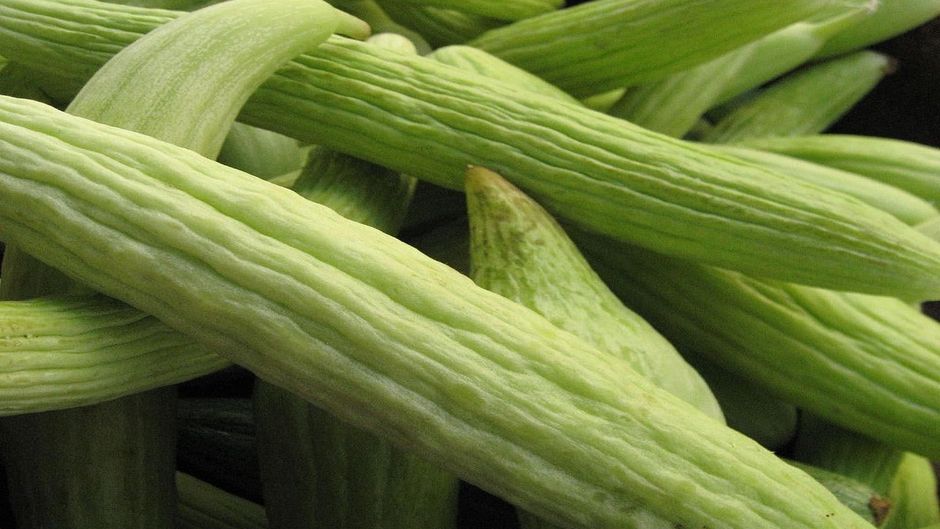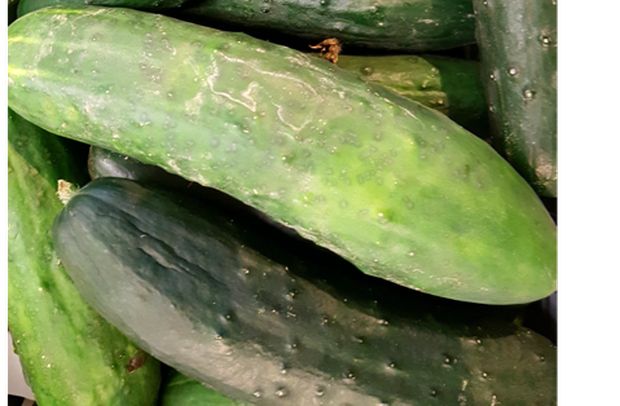The Armenian cucumber is not a true cucumber, but is most likely the fruit referred to in Num. 11:5 and Is. 1:8.
 Antonio Cruz.
Antonio Cruz.
We remember the fish we ate in Egypt at no cost—also the cucumbers, melons, leeks, onions and garlic. (Nm. 11:5)
The Hebrew term for cucumber in the Bible is qishshú (Num 11:5). However, Isaiah (1:8) refers to a so called “cucumber field”, and contains the same Hebrew word, so it probably refers to a field where Armenian cucumbers or muskmelon are grown.
In fact, both cucumbers and melons, as well as pumpkins, leeks, onions and garlic are vegetables which were eaten frequently in Egypt, and which the Israelites hankered after during their desert pilgrimage.
In the 19th century, Dr Tristram explained that during his travels through the desert he had noticed the rudimentary huts that the farmers built on the fields to keep watch over the cucumbers and protect them from certain wild animals. [1]
They built them on oleander stilts, stuck in the ground, and their upper part was covered with interwoven branches. They were so fragile that, after the cucumbers had been harvested, they would partially collapse, leaving an image of desolation in the fields.
The book of Job also describes these flimsy structures with the following words: The house he builds is like a moth’s cocoon, like a hut made by a watchman. (Job 27:18)
There are many different kinds of cucumbers in the Fertile Crescent, and it is not easy to know exactly which of them these Bible verses refer to. But two types that can still be found in Bible lands might coincide with this Hebrew term.
It could either be the Armenian cucumber (Cucumis melo flexuosus) – known in ancient times by the name Cucumis chate, which is not in fact a real cucumber but a cucumber-shaped melon, or the real cucumber or common cucumber (Cucumis sativus).
More than likely, the Bible refers to the former, to the Armenian cucumber, which belongs to the Cucurbitaceae family, and is also known as the yard-long cucumber, snake cucumber, snake melon.

The fruit is cucumber-shaped but much longer, and can even reach a length of up to one metre. They are curved, which gives them a snake-kike appearance, and their surface has vertical grooves.
The common cucumber (Cucumis sativus), which is also curved, originated in India. Each individual plant has both male and female flowers. The fruit varies in size, although it is much smaller than the Armenian cucumber, is cylindrical in shape, green and slightly tubercular before ripening.
It is eaten uncooked or pickled (gherkins). Up to 97% of a cucumber consists of water, and the rest are carbohydrates, vitamins B, C and K as well as numerous minerals.
The theologian Thomas Le Banc (1599 – 1669), commenting on psalm 91, refers to the typical huts made of branches in the following reflection:
Abiding denotes a constant and continuous dwelling of the just in the assistance and protection of God. That help and protection of God is not like a lodge in a garden of cucumbers, or in a vineyard; which is destroyed in a moment, nor is it like a tent in the way which is abandoned by the traveller. It is a strong tower, a paternal home, wherein we spend all our life with the best, wealthiest, and mightiest of parents. [2]
[1] Tristram, H. B. 1883, The Natural History of the Bible, London, p. 442.
[2] Spurgeon, C. H Treasury of David.

Las opiniones vertidas por nuestros colaboradores se realizan a nivel personal, pudiendo coincidir o no con la postura de la dirección de Protestante Digital.
Si quieres comentar o